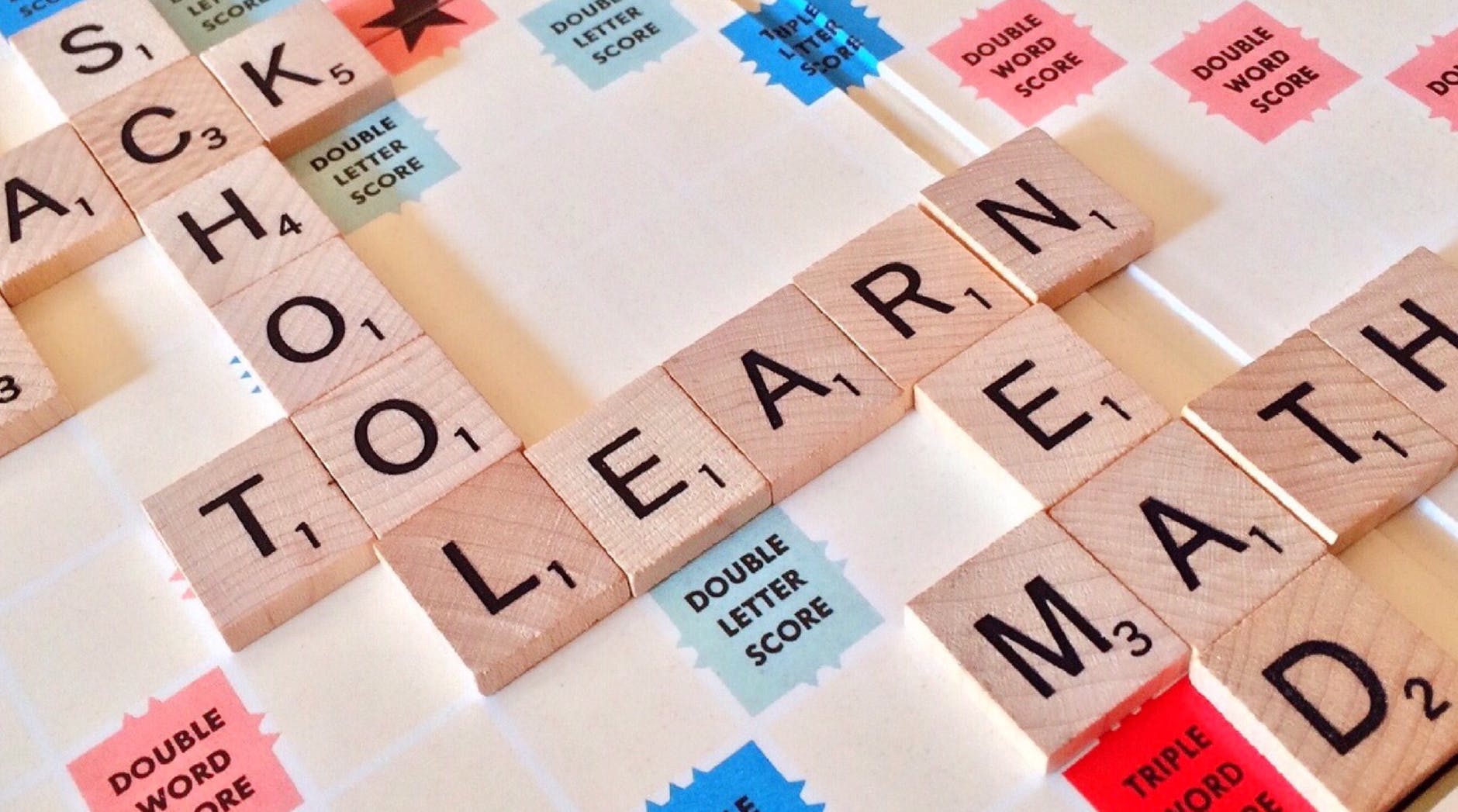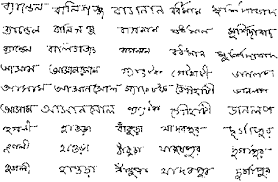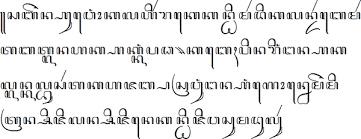A language is a structured system of communication used by humans consisting of speech and gestures. Approximately 6,500 languages are spoken in the world today. Each and every one of them make the world a diverse and beautiful place, but any language can be encoded into secondary media using auditory, visual, or tactile stimuli for example, in writing, whistling, signing, or braille. Almost half of the world’s population claims one of only 10 languages as their mother tongue. Determining what are the most spoken languages in the world is a more difficult task. In today’s increasingly globalized world, having a shared means of communication or an international language, rather it is more important than ever. A spoken language is a language produced by articulate sounds, as opposed to a written language. The relationship between spoken language and written language is complex. This is an approximate list of languages by the total number of speakers. Top 10 languages of the world are as follows.
1.English

English is an Indo-European language and belongs to the West Germanic group of the Germanic languages. English is still the most-spoken language around the world, not due to its native speakers alone, but because many others learn it as a second language. It is a part of the West Germanic language family and is present in six of seven continents as an official language. While English and Mandarin Chinese come close when looking at their total number of speakers, English has a wider geographical distribution. English is classified as an official language in 67 different countries worldwide. With over 1.1 billion speakers worldwide, English is currently the closest we’ve come to a lingua franca, a common language that connects people from different backgrounds.
The relative ease with which English can be picked up and the pervasive soft power of US culture means that English will continue to dominate the world stage for the foreseeable future. English is the majority native language in the United States, the United Kingdom, Canada, Australia, New Zealand and Ireland, an official and the main language of Singapore, and it is widely spoken in some areas of the Caribbean, Africa, South Asia, Southeast Asia, and Oceania. English speakers are called “Anglophones”. It is also an official language of India, the Philippines, Singapore, and many countries in sub-Saharan Africa, including South Africa. English language, which is comprised of over 1,000,000 words. a common language that connects people from different backgrounds.
- Mandarin Chinese

The second most spoken language in the world is Mandarin Chinese. Mandarin Chinese is spoken in 13 countries. 1,117 million people will speak Mandarin Chinese in the world. Mandarin Chinese is recognized as an official language in just five regions. It has the largest number of native speakers of any language and is spoken by 70% of all Chinese speakers. Many people fear learning Mandarin due to its 50,000 different characters, but 2,500 characters would be enough to understood. Mandarin originated in North China and most Mandarin languages and dialects are found in the north. It is used as one of the working languages of the United Nations. It is also one of the most frequently used varieties of Chinese among Chinese diaspora communities internationally and the most commonly taught Chinese variety.
The English word “mandarin” originally meant an official of the Ming and Qing empires. Traditionally, seven major groups of dialects have been recognized. Aside from Mandarin, the other six are Wu, Gan and Xiang in central China and Min, Hakka and Yue on the southeast coast. It is the native language of two-thirds of the population. Mandarin is the dominant form of Chinese in China. There is an estimated 100,000 Chinese characters. Mandarin has four tones and an additional neutral tone. Mandarin Chinese is not the official language in Hong Kong nor in Macau. Mandarin is the official language in 3 countries. It’s Considered One of the Hardest Languages to Learn. Chinese Has Different Calligraphy Styles .
- Hindi
Hindi is an Indo-European language. Hindi became the official language of India in 1965. Hindi and Urdu are almost completely mutually intelligible, so they are sometimes classified as one language, Hindustani, instead of two separate languages. Totally 615 million people will speak Hindi in the world. India has 23 official languages, with Hindi/Urdu chief among them. Mainly in northern India and parts of Pakistan, Hindi uses devnagri script, while Urdu uses Persian notation. At the time of writing, the debate about its role in Indian education and society has once again flared up: Prime Minister Narendra Modi, a Hindu nationalist, is seeking to have Hindi displace English in the southern Indian states as the primary language of official communication and education, a strategy that has been met with resistance.
Each letter of the Hindi alphabet has its own independent and distinct sound. India’s Hindi-speaking regions celebrate Hindi Day annually on 14th September. The word Hindi got its name from the Persian word ”Hind” which means “land of the Indus River”. Devnagari is written from left to right and consists of 11 vowels and 33 consonants. The alphabetical table of Hindi is called ‘Varnmala’ meaning ‘garland of letters’. Approximately 77% of Indians can read, write, speak or understand Hindi. The interesting fact about Hindi is it is taught in 176 of the world’s universities out of which 45 alone are in America. Hindi is one of the seven languages that are used to make web addresses.
- Spanish

Spanish is also the official language of a country in Central Africa, Equatorial Guinea. It has also seen an incredible development in its number of speakers due to its growing cultural influence. Totally 534 million people will speak Spanish in the world. Spanish only falls in second place behind Chinese, which is spoken by over a billion people and far outranks any other language. There are 21 countries that have Spanish as the official language. For many people in these 21 countries, it’s the only way to communicate and all official correspondence and documents are in Spanish. It is one of the easiest languages to learn. Spanish and English Share Large Vocabulary.
Spanish speakers often refer to their language as espanol as well as castellano, which is the Spanish word for “Castilian.” The earliest Spanish texts were written over 1000 years ago. The demand of learning Spanish is increasing. It is the official language or the de facto language of Spain, Mexico, Argentina, Colombia, Bolivia, Chile, Costa Rica, Cuba, Dominican Republic, Ecuador, Equatorial Guinea, El Salvador, Guatemala, Honduras, Nicaragua, Panama, Paraguay, Peru, Puerto Rico, Uruguay, and Venezuela. Like most languages, Spanish has its own very unique words which can’t be translated in other languages.
- French
French is a Romance language of the Indo-European family. In 1635, the French Academy was established, and it was the first organization ever to rule over a language. Totally 280 million people will speak French in the world. French is an official language in 29 countries, such as France, Belgium, Canada, Luxembourg, Switzerland, Congo, Mali, Senegal, and it is spoken on every continent. Along with English, French remains an influential language in the diplomatic world. Out of all the countries in the world, France is the most visited, boasting over 75 million tourists every year. Over 1.5 million Americans are native French speakers. Kinshasa is the world’s second largest French speaking city, after Paris, and before Montreal and Brussels. French is still a working language of the UN, the EU, and dozens of international organizations including the International Red Cross committee, International Labor Organization, Amnesty International, and Doctors without Borders.
New York, California and Florida have joined Louisiana and New England as the main centers of French in United States. French Popularity is Increasing. 29% of English Vocabulary Comes From French. French is Easier to Learn. A French-speaking person or nation may be referred to as Francophone in both English and French. French is also one of six official languages used in the United Nations. It is spoken as a first language in France; Canada ; Belgium ; western Switzerland ; Monaco; parts of Luxembourg; parts of the United States; northwestern Italy; and various communities elsewhere. Homephones are words sharing the same pronunciation but with different spellings and meanings. French has a great number of homophones.
- Standard Arabic
Arabic, like Chinese, is so vastly different in its respective dialects as to be effectively a number of languages, grouped as one for the sake of convenience. Totally 274 million people will speak Standard Arabic in the world. Modern Standard Arabic is a primarily written form, closely related to the Classical Arabic of the Quran. Arabic is the official language of the 26 countries that form the Arab League. As in other Semitic languages, Arabic has a complex and unusual method of constructing words from a basic root. IT IS AT LEAST 1,500 YEARS OLD. THE WORDS ARE WRITTEN FROM RIGHT TO LEFT; NUMBERS ARE WRITTEN FROM LEFT TO RIGHT. Arabic is widely taught in schools and universities and is used to varying degrees in workplaces, government and the media. Arabic has influenced many other languages around the globe throughout its history.
Some of the most influenced languages are Persian, Turkish, Hindustani , Kashmiri, Kurdish, Bosnian, Kazakh, Bengali, Malay , Maldivian, Pashto, Punjabi, Albanian, Armenian, Azerbaijani, Sicilian, Spanish, Greek, Bulgarian, Tagalog, Sindhi, Odia and Hausa and some languages in parts of Africa. it is one of the six official languages of the UN, the others being English, French, Spanish, Russian and Chinese. Most of the countries that use Arabic as their official language are in the Middle East. Arabic is the sixth most-spoken language worldwide. The Arabic alphabet does not include capital letters. In the family tree of languages, Arabic belongs to the Afroasiatic family which is spread across the Middle East and a large part of Africa, consisting of 6 branches and around 300 living languages.
- Bengali

Bengali is the only language in the world to be also known for its language movements and people sacrificing their life for their mother language. Totally 265 million people will speak Bengali in the world. West Bengal, now part of India, from its counterpart East Bengal, now Bangladesh. It is the most widely spoken language of Bangladesh and the second most widely spoken of the 22 scheduled languages of India, after Hindi. It is the language of Kolkata. Bengali is the fifth most-spoken native language and the seventh most spoken language by total number of speakers in the world. It is spoken by significant populations in other states including Arunachal Pradesh, Delhi, Chhattisgarh, Jharkhand, Meghalaya, Mizoram, Nagaland and Uttarakhand. There are two standard styles in Bengali: the Sadhubhasa and the Chaltibhasa.
The four main dialects roughly approximate the divisions of the Bengali-speaking world, known as Radha (West Bengalproper); Pundra, or Varendra (the northern parts of West Bengal and Bangladesh); Kamrupa (northeastern Bangladesh); and Bangla (the dialects of the rest of Bangladesh). Both the national anthems of Bangladesh (Amar Sonar Bangla) and India (Jana Gana Mana) were composed in Bengali. Bengali, also called Bangala, Bangla, Bangla-Bhasa, belongs to the Eastern group of the Indo-Aryan branch of the Indo-European language family. It is spoken in West Bengal; Tripura; Jharkhand, Dhanbad, Manbhum, Singhbhum, and Santal Parganas; Odisha, Mayar and Bales; Bihar; Assam, and Goalpara district (Ethnologue). Bengali has 29 consonants and it has 7 oral vowel phonemes.
- Russian
Russian is an East Slavic language native to the Russians in Eastern Europe. Russian is also the second-most widespread language on the Internet, after English. Russian shares strong similarities with Belorussian and Ukrainian. Russian is the 8th most-spoken language in the world. A few English words are of Russian origin. Totally 258 million people will speak Russian in the world. Famed for its inscrutable grammar and quite lovely Cyrillic script, it remains one of the six languages spoken in the UN. The Cyrillic alphabet has 33 letters; 10 vowels, 21 consonants, and 2 that have no sound. There are only about 200,000 words in the Russian language. Approximately 110 million Internet users speak Russian. If you want to be an astronaut, you have to learn Russian. Russian speakers outperform English speakers at distinguishing shades of blue. Word for German in Russian is nemetski, which means “those who can’t speak”. English speakers only understand 10% of the Russian language.
9.Portuguese
The fastest-growing European language after English is Portuguese. Totally 234 million people will speak Portuguese in the world. It is also the second-most spoken language, after Spanish, in Latin America. Portuguese was officially declared a language in 1290. avid Portuguese traders and conquerors brought their language to Africa, Asia and the Americas. The spread of Portuguese may have initially been tied to European colonization, but the colonized countries developed their own vibrant cultures that transformed the language forever. Today, Portuguese is spoken by 220 million native speakers in countries like Brazil, Goa, Angola, Mozambique, Cape Verde, Guinea-Bisseau, Sao Tome and Príncipe, and Macau. It’s also the language of Machado de Assis, Bossa Nova, Mia Couto, Fernando Pessoa, and Agualusa. Portuguese language, Portuguese Português, Romance language that is spoken in Portugal, Brazil, and other Portuguese colonial and formerly colonial territories.
Standard Portuguese was developed in the 16th century, basically from the dialects spoken from Lisbon to Coimbra. In 2008 the Portuguese parliament passed an act mandating the use of a standardized orthography based on Brazilian forms. It also has a presence on almost all of the continents. In fact, it is the official language in nine different countries: Portugal, Brazil, Mozambique, Angola, Guinea-Bissau, Timor-Leste, Equatorial Guinea, Cape Verde, and São Tomé and Principe. There are over 5 million native Portuguese speakers in Africa. According to UNESCO, the language has high growth potential as an “international communication language in Southern Africa and South America.” Portuguese and Spanish are not mutually intelligible. It is the fastest-growing European language in the world – behind English.
10.Indonesian

Indonesia is the official language of Indonesia. Indonesian is a polite language. Totally 200 million people will speak French in the world. While Indonesians speak a variety of indigenous languages at home, the official language for formal education, governance, judiciary, administration, national mass media and several forms of communication is Bahasa Indonesia. It is easy to learn. Indonesia is rich in natural resources, such as gold, copper, tin, natural gas and crude oil. It has made a name for itself as a manufacturing center. Several of the major countries in the world are trade partners of Indonesia. Indonesian is a member of the Malayo-Polynesian branch of the Austronesian language family. Bahasa Indonesia is a standardized dialect of Malay which had been used as a lingua franca in the Indonesian archipelago for centuries, and which achieved the status of an official language with the declaration of independence of Indonesia from the Netherlands in 1945. The two languages are very similar in their sound system, grammar, and vocabulary.
Besides Indonesia, the language is also spoken in the Netherlands, the Philippines, Saudi Arabia, Singapore, and the U.S. Standard Indonesian is based on the formal variety of the language spoken in Jakarta, the capital of Indonesia. Indonesian has been widely spoken in Southern Asia. It is spoken as a mother tongue by only 7% of the population of Indonesia, but altogether more than 200 million people speak it, with varying degrees of proficiency. The main purpose of loaning words from the Indonesian language is to describe things which are uniquely Indonesian like flora and fauna of the country, known as Cockatoo and Komodo. Both these English words have Indonesian roots. Indonesia is one of the richest countries in the world when it comes to the supply of natural resources like natural gas, crude oil, gold and copper. This is why more and more businesses are investing in Indonesian translation, in order to expand their business at the said location. It became the official language of Indonesia in 1945.
